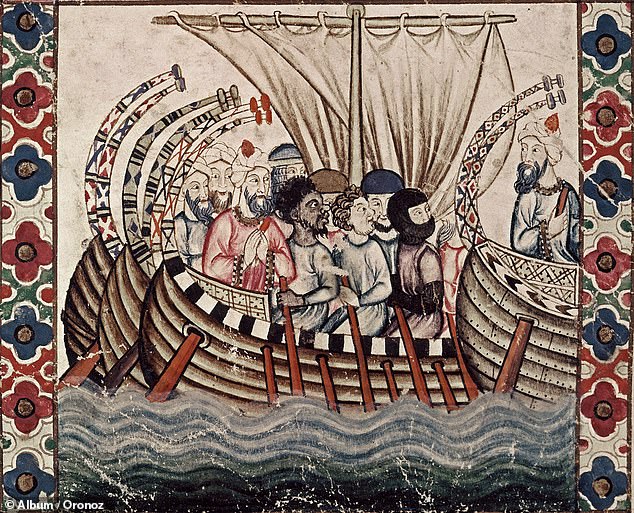Captives and Companions: A History of Slavery and the Slave Trade in the Islamic World by Justin Marozzi (Allen Lane £35, 560pp)
They were all borne down with loads of fire-wood, and even the poor little children, worn to skeletons by fatigue and hardships, were obliged to bear their burden, while many of their inhuman masters rode on camels, whips in hand.’
So wrote British naval officer Captain G. F. Lyon in 1819, a witness to the Islamic slave trade in the Sahara. Even worse, the Swiss explorer Johann Burckhardt observed that ‘very few female slaves who have passed their tenth year, reach Egypt or Arabia in a state of virginity’.
While the West has, quite rightly, hung its head in shame over the transatlantic slave trade, open discussion about the vast Islamic trade in both African and European slaves remains rare.
Justin Marozzi has set out to correct this in a new work, mixing appalling accounts of inhumanity with more heartening tales of slaves who overcame adversity.
Most notable, perhaps, are the famous concubines of the glittering courts of Baghdad and Istanbul, slave-girls who became the pop stars and pin-ups of their day – though their lives remained risky. ‘They could just as easily make life-changing fortunes from a bawdy joke as lose their heads from a slip of the tongue.’
One such was the brilliant poet and slave, Inan, a concubine in Abbasid Baghdad, both ‘flawlessly beautiful’ and skilled in the ‘public cut and thrust of poetic jousting, a good deal of it coarse and sexually explicit’. She specialised in mocking her numerous lovers’ disappointing, ah, physiques.
Much here is grim reading though. For centuries, Islamic slavers preyed brutally upon their neighbours, especially black Africans but also white Europeans. Devon and Cornwall were both subjected to repeated slave raids in the 1620s, the demand for fair-skinned slave girls being high, and in 1627 slavers raided Iceland, taking more than 400 men, women and children into captivity. Witnesses described how one woman ‘unable to walk was thrown into the flames with her two-year-old baby’.

Capture: Slaves of Alfonso X of Castille
And slavery is still with us today. In Mali, Marozzi meets a man called Hamey who was beaten by a mob in his native village. No one intervened, many laughed and filmed it.
He had tried to resist his own hereditary slave status. Driven from the village, he and his family now live in penury in a shack on the edge of Bamako, Mali’s capital. Yet he remains magnificently unbroken. ‘Deep down, I’m free. Whatever my financial worries, I’m free. I’ll never be a slave again.’
While Hamey was enslaved by his own countrymen, most states largely enslave foreign peoples, a ‘tradition’ dating back a thousand years or more.
King Hassan II of Morocco, who only died in 1999, owned around 80 slaves and concubines, none of the latter over 15. Today, the Walk Free human rights organisation estimates there are still some 740,000 slaves in Saudi Arabia alone.
Captives And Companions is a scrupulously fair, fearless and detailed history, as well as a tacit demand for the world to finally end this horror which we like to imagine is all in the past.












